#1854 - 1903)
Explore tagged Tumblr posts
Text
Две подруги, 1899г.
Карл Швенингер
Младший (1854-1903)
🔹️Австрийский художник
академического
направления.

#Две подруги#1899г. Карл Швенингер Младший (1854-1903)🔹️Австрийский художник академического направления.
0 notes
Text




Red Chalk Drawings
Study for a Young Woman, 1890, Simeon Solomon
Head study of a Girl, 1903, Arthur Hughes
Louisa, wife of Murray Marks, 1868, Dante Gabriel Rossetti
Portrait of a Woman, Alice Mary Chambers (b.1854/5)
#pre-raphaelite#art#victorian art#pre raphaelite#preraphaelite#dante gabriel rossetti#simeon solomon#arthur hughes#alice mary chambers#red chalk#sanguine chalk#drawing
411 notes
·
View notes
Text

Jacek Malczewski (Polish, 1854-1929), Prawo. (Tryptyk Prawo, Ojczyzna, Sztuka) [Law. (Triptych Law, Country, Art)], 1903. Oil on panel, 69.5 x 98 cm. National Museum in Wrocław
146 notes
·
View notes
Text
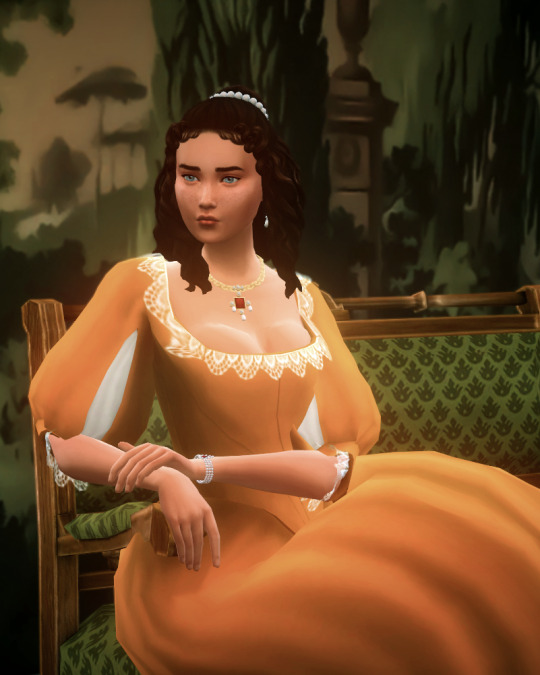
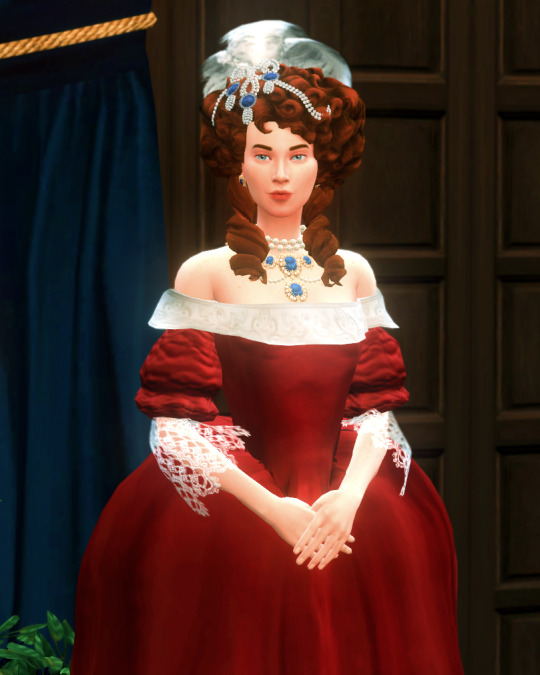

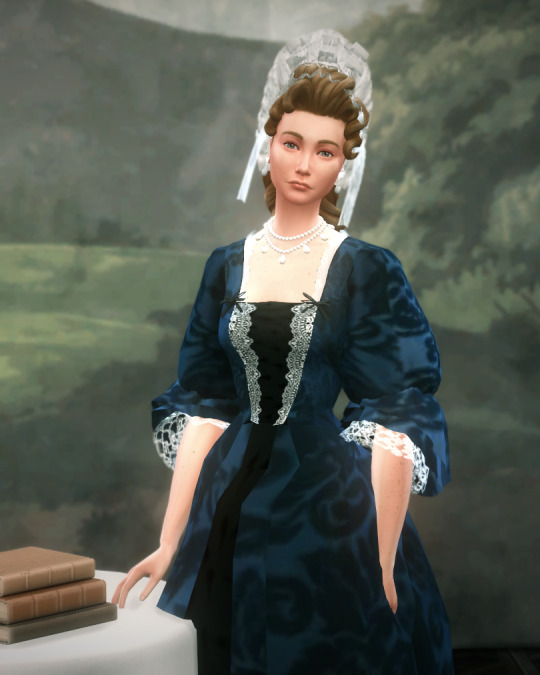


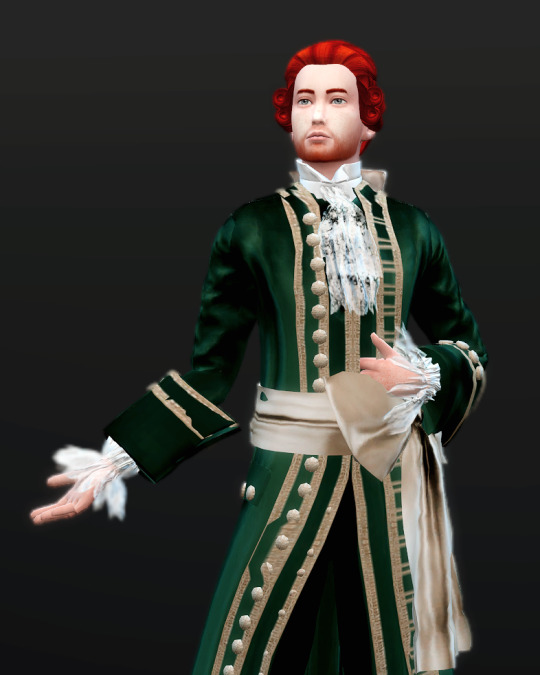

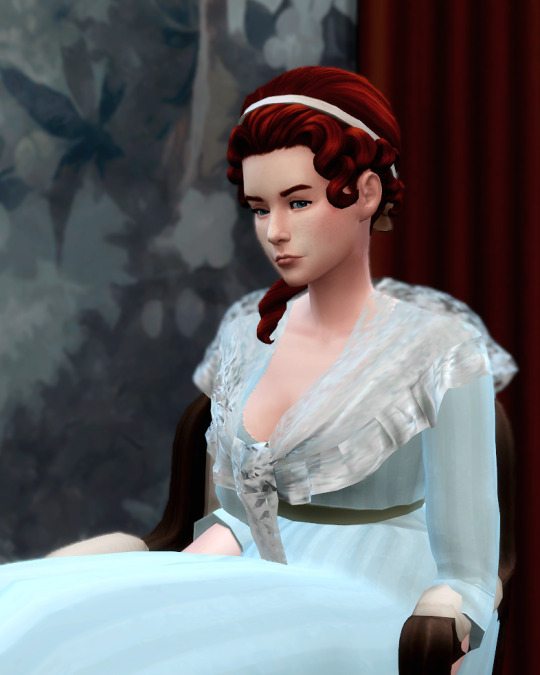
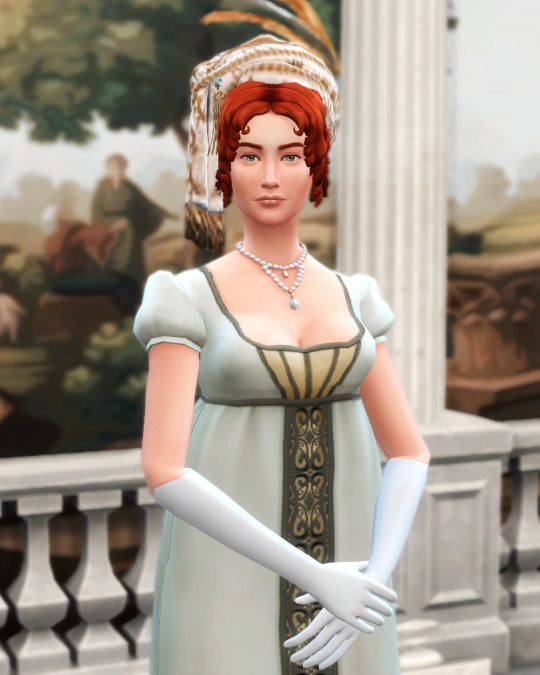
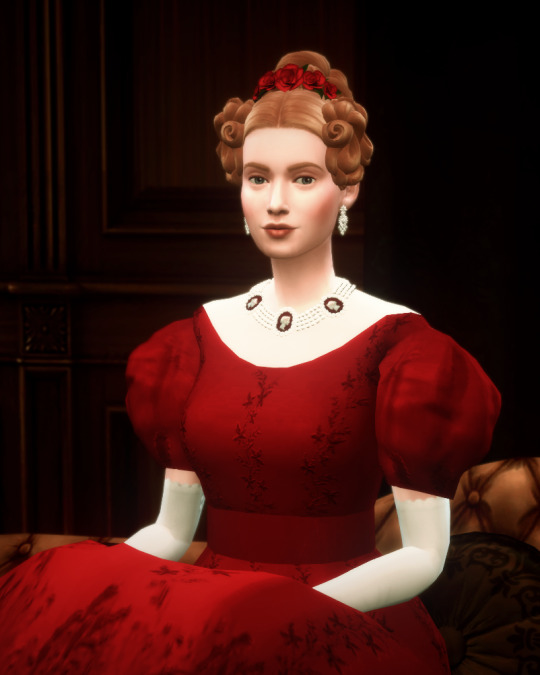

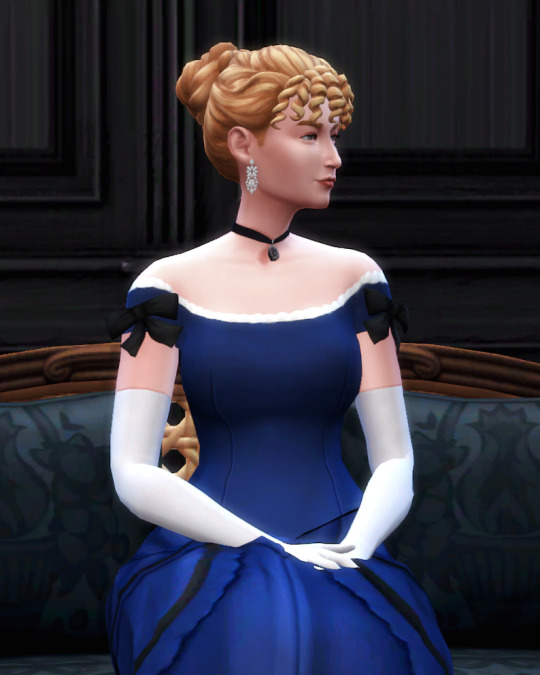
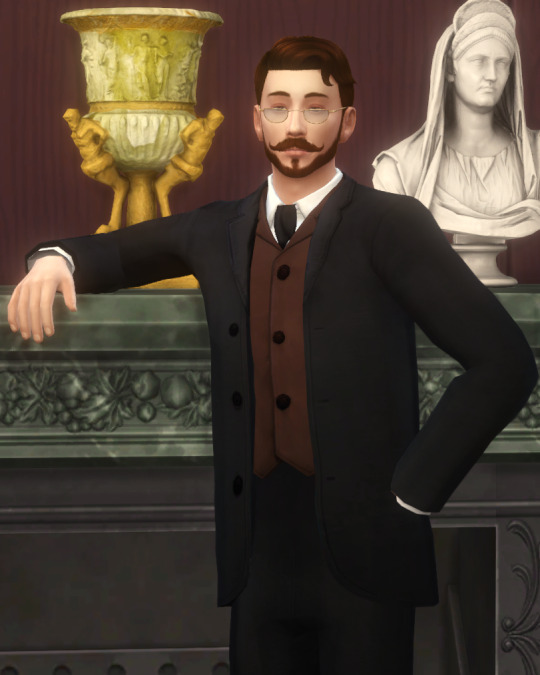


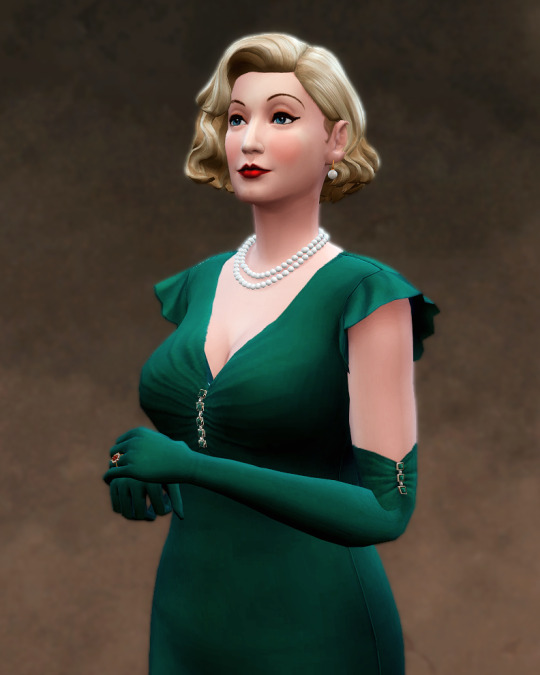




Royal Consorts (and almost-Consorts) of the House of Lorimer
1. Charlotte (1616-1667) - Philip I 2. Henrietta (1638-1729) - Charles III 3. Anne (1668-1690) - Philip II ✻ 4. Theodora (1675-1766) - Philip II (second wife) 5. Cosima (1701-1721) - Frederick I ✻ 6. Louise (1704-1782) - Edward IV 7. Patrick (1724-1796) - Augusta 8. Adelaide (1757-1833) - Arthur IV 9. Aveline (1780-1839) - Crown Prince Charles ✻ 10. Georgiana (1781-1866) - Frederick II 11. Joan (1805-1854) - Charles IV 12. Mary Josephine (1838-1916) - Philip III 13. Elizabeth (1865-1896) - Frederick III 14. Ernest (1887-1958) - Jane II ✻ 15. Catherine (1873-1975) - Richard V 16. Frances (1897-1924) - Arthur V ✻ 17. Alice (1903-1971) - Arthur V (second wife) 18. Rosamund (1927-) - Frederick IV 19. Laura (1956-) - Arthur VI 20. Natalie (1977-) - Crown Prince Richard ✻ 21. Carys (1995-) - Matilda II ✻
✻ indicates royal consorts that were never crowned
post inspired by @warwickroyals 💙
#the lorimers#sims 4#ts4 royalty#sims 4 historical#sims 4 baroque#sims 4 rococo#sims 4 regency#sims 4 victorian#ive been obsessed with that one post by ayanna for MONTHS now#very happy to finally make a version of it for my own story!#this took so much work but it was totally worth it#still not gonna tag all these sims tho#bluep.txt
111 notes
·
View notes
Text

Morgenstern ~ c.1903 ~ attributed to Carl Schweninger the Younger (Austrian painter, 1854-1912)
112 notes
·
View notes
Text






Jenny Nystrom (1854-1946)
Christmas Fairy tales, c.1903
#Jenny Nystrom#grimms fairy tales#sleeping beauty#cinderella#hansel and gretel#little red riding hood
6 notes
·
View notes
Text

Footnotes
[1] I here gladly acknowledge my obligations to Victor Drury, {15} whose classification I adopt and follow.
{1} Actually Say may have gone farther.
{2} From Royal Commentaries of the Incas (1609) by El Inca Garcilaso de la Vega (c. 1539-1616; not to be confused with the earlier Spanish writer of the same name); Lum quotes from the 1871 translation by Clements Markham.
{3} Principles of Sociology I.ii.10
{4} Probably American historian John Lothrop Motley (1814-1877).
{5} Swiss historian and economist Jean Charles Léonard de Sismondi (1773-1842).
{6} Jack Cade, leader of 1450 peasant rebellion; John Wycliffe, 14th-century Catholic dissident; Jacob van Artevelde and Philip van Artevelde, father and son, 14th-century Flemish nationalist leaders; Étienne Marcel, bourgeois leader involved in the 1358 French peasant rebellion known as the Jacquerie; rising of the Swiss cantons: a 14th-century confederacy that threw off Habsburg rule; Cola di Rienzi, 14th-century Italian revolutionary leader; Hanseatic League, Renaissance mercantile alliance of northern Europe.
{7} A reference to Auguste Comte’s (1798-1857) division of history into theological, metaphysical, and positive/industrial phases, though in his description of the details Lum seems closer to Spencer than to Comte.
{8} Barebone’s Parliament, form taken by the British Parliament in 1653, between the dissolution of the Rump Parliament and the rise of Cromwell’s Protectorate, taking its name from the involvement of religious dissenting leader Praise-God Barebones or Barebone or Barbon (c. 1598-1679); Emmanuel Joseph Sieyès (1748-1836), French revolutionary leader who served in the national legislature known as the Convention.
{9} “Progress and Order” (or equally “Order and Progress”) was a popular slogan among followers of Comte; see the Brazilian flag.
{10} Pen name of American humorist Benjamin Drew (1812-1903).
{11} Bonds payable only upon the death of a third party, though here used metaphorically to mean payable only in the afterlife.
{12} “The voice of the people [is] the voice of God.”
{13} Scottish writer Thomas Carlyle (1795-1881), whose description of economics as “the dismal science” has often been thought (as probably here by Lum) to refer to its conservative aspects (e.g., Malthus’s alleged proof that improvements in the lot of the working class were unattainable), though in fact Carlyle meant to be condemning its liberal aspects (specifically its opposition to slavery).
{14} plural sic.
{15} Victor Drury (1825-1918), French-born American anarchist active in the Knights of Labor.
{16} William Godwin (1756-1836), English anarchist philosopher who advocated voluntary equality of property.
{17} American economist Henry George (1839-1897), who though generally a free-market advocate regarded society as the legitimate owner of all land, and consequently favoured replacing all taxation with a single tax on land; American state-socialist writer Edward Bellamy (1850-1898); Lum’s line “looking backward to Sparta and Peru” is a sarcastic reference to Bellamy’s utopian 1888 novel Looking Backward.
{18} A reference to an example in Henry George’s 1881 book The Land Question.
{19} German economist Wilhelm Roscher (1817-1894), an important influence (perhaps surprisingly) on both the German Historical School and the French Liberal School. The passage quoted is from Joseph Lalor’s 1878 translation of Roscher’s 1854 Principles of Political Economy.
{20} A frequent misquotation from Shakespeare’s Tempest IV.1.151-57, eliding “the baseless fabric of this vision” with “we are such stuff as dreams are made on” a few lines later.
{21} English economist David Ricardo (1772-1823) had argued in his 1817 Principles of Political Economy and Taxation that there was a natural tendency for wages to approach the cost of production of labour, which he held to be the bare cost of keeping the labourer alive and able and willing to work; however, he also held a) that wages may be kept above this natural rate indefinitely in an improving economy, and that b) willingness to work depends in any case on cultural factors (including prevailing standards of comfort and decency). Dropping these qualifications, Ferdinand Lassalle (1825-1864) and other socialist thinkers developed Ricardo’s theory into an Iron Law of Wages according to which wages are doomed to stand forever at bare physical subsistence so long as the wage system survives.
{22} Classical liberal English statesman John Bright (1811-1889), free-trade and anti-imperialist activist; the quotation is from Bright’s Glasgow University installation speech in March 1883.
{23} Whatever source Lum is quoting (presumably by Henry George) is evidently to be found reprinted in the 1901 Sunset Club.
{24} In Greek mythology Cerberus was the three-headed dog who guarded the entrance to the underworld.
{25} A standard Spencerian concern, taking the line of progress to run toward greater differentiation. By “to greater differentiation” Lum presumably means “in preference to greater differentiation.”
{26} The quotation is from Spencer’s 1876 Principles of Sociology V.18 §570.
{27} This phrase often means “piecework,” but in the present context seems to mean labour done on one’s own without cooperation.
{28} The English phrase “to go without saying” derives from the French aller sans dire, although aller de soi, “to go of itself,” may be the more common French idiom.
{29} Lum had had an acrimonious falling-out with the Greenback Party ten years earlier.
{30} Change of antecedent sic.
{31} Presumably there should also be a hyphen between “from” and the first “day.”
{32} An agrarian association friendly to the urban labour movement, formed in Michigan in 1889; a similar movement of the same name was formed in Ontario the following year.
{33} The passage that follows is drawn from the article “‘Greatest Happiness’ Principle” (Westminster Review XI, no 21 (July 1829), which is apparently but not explicitly by Bentham; see Macaulay’s discussion.
{34} The quotation which follows is from Herbert’s “A Politican in Sight of Haven.”
{35} Principles of Sociology V.xviii.563.
{36} Probably a reference to the title of Henry George’s 1879 Progress and Poverty.
{37} Either American economist Amasa Walker (1799-1875) or his son Francis Amasa Walker (1840-1897).
{38} American anarchist and currency reformer William Batchelder Greene (1819-1878).
{39} Hebrews 11:1.
{40} This makes no sense, and is an error for “will not go bankrupt at the same tine” in the original.
{41} Should be “since it is subscribed.”
{42} From Proudhon’s Organisation of Credit and Circulation (1848).
{43} Science of Wealth (1866), ch. 5.
{44} Another quotation from Roscher.
{45} “The great thinker is the secretary of his age”: from English philosopher George Henry Lewes (1817-1878), Problems of Life and Mind (1874).
{46} The Land Question (1881), ch. 16.
{47} Bavarian-American anarcho-communist Johann Most (1846-1906).
{48} French novelist Edmond François Valentin About (1828-1885).
{49} First quotation from Rights of Man (1792), II.1; next three from First Principles of Government (1795).
{50} Reference to a quotation from Malthus.
{51} Science of Wealth, XI.6.
{52} American abolitionist, businessman, liberal economist, and antiwar activist Edward Atkinson (1827-1905).
{53} German-American anarchist August Spies (1855-1877), one of the Haymarket martyrs.
{54} Isaiah 58:1.
{55} American abolitionist poet John Greenleaf Whittier (1807-1892), in “Stanzas for the Times.”
#economics#history#industry#labor#money#sociology#work#anarchism#anarchy#anarchist society#practical anarchy#practical anarchism#resistance#autonomy#revolution#communism#anti capitalist#anti capitalism#late stage capitalism#daily posts#libraries#leftism#social issues#anarchy works#anarchist library#survival#freedom
3 notes
·
View notes
Text
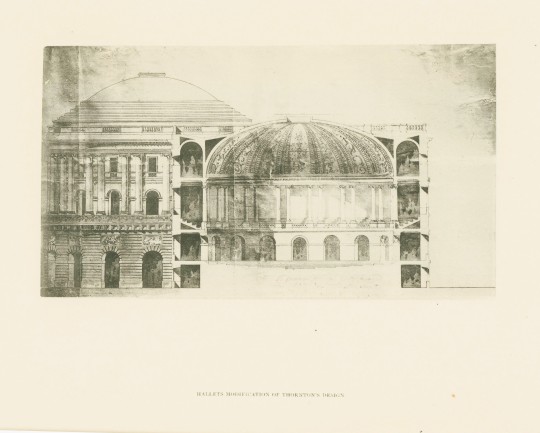
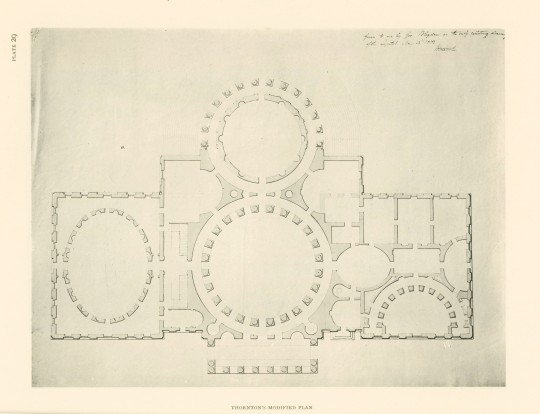
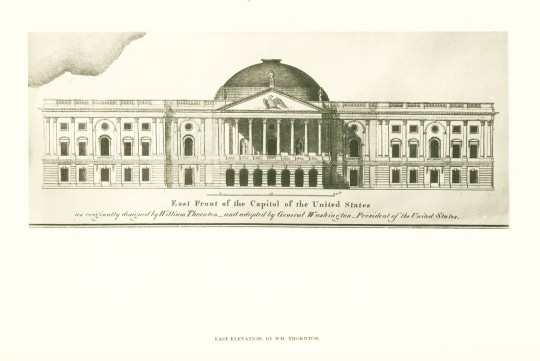
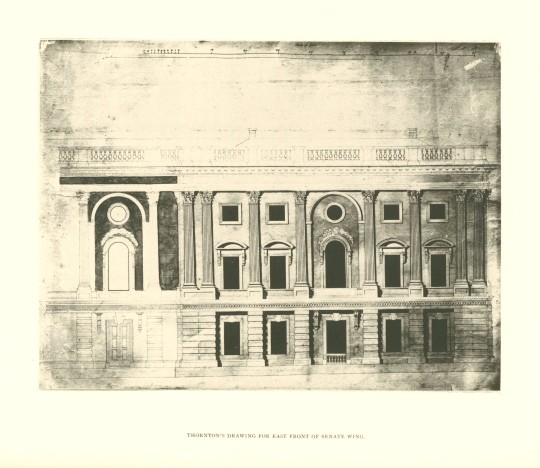
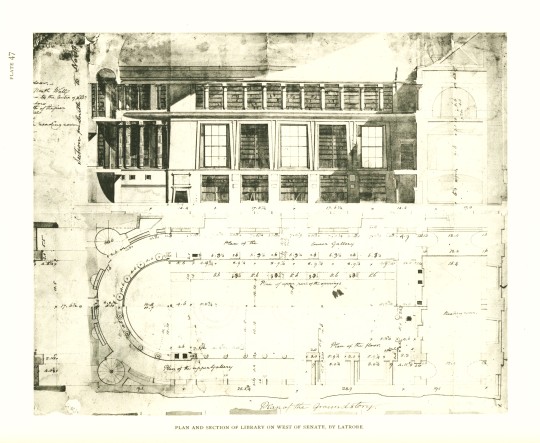
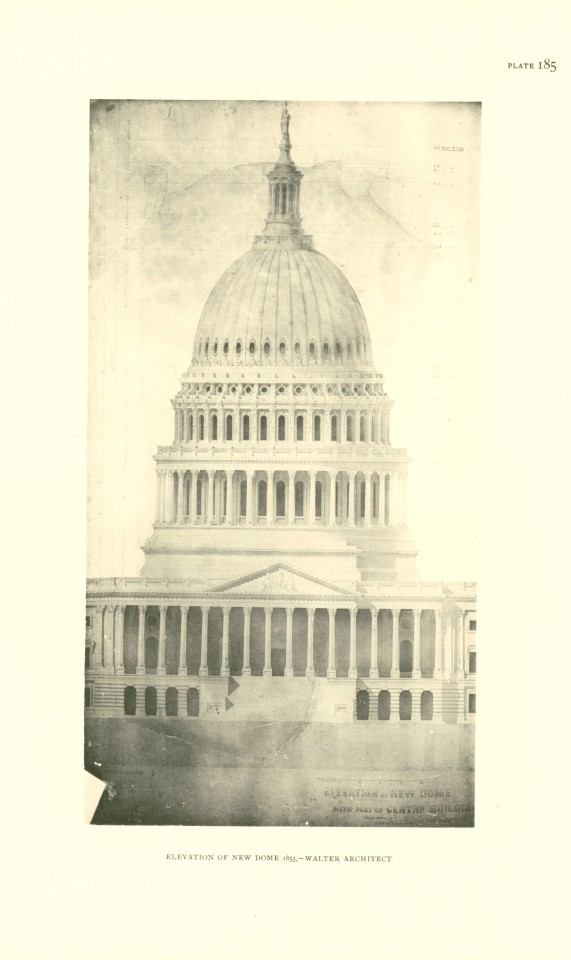
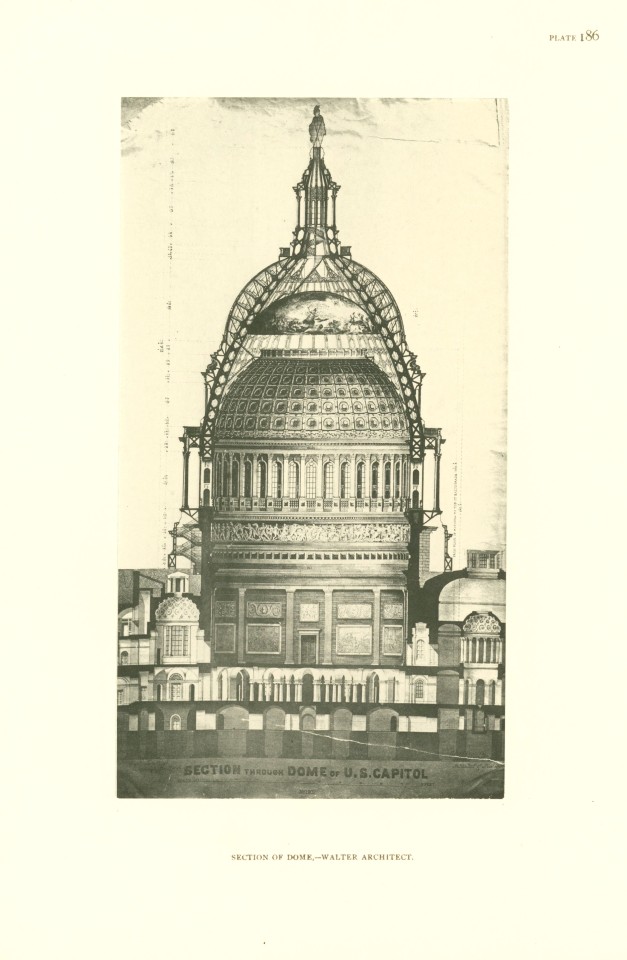
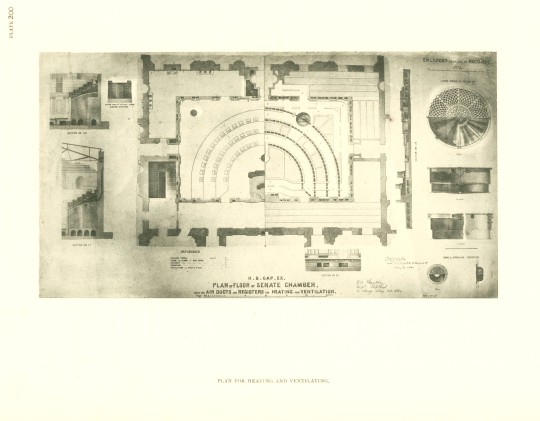
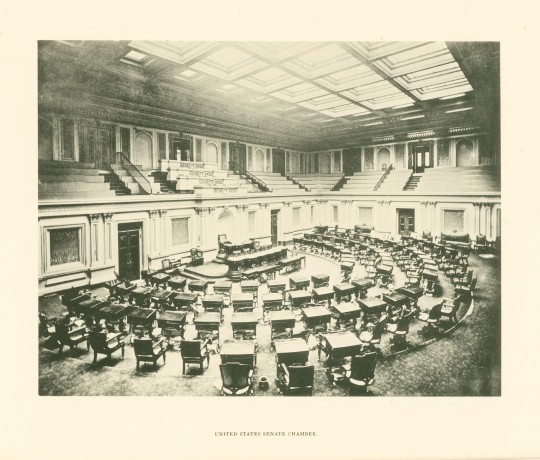
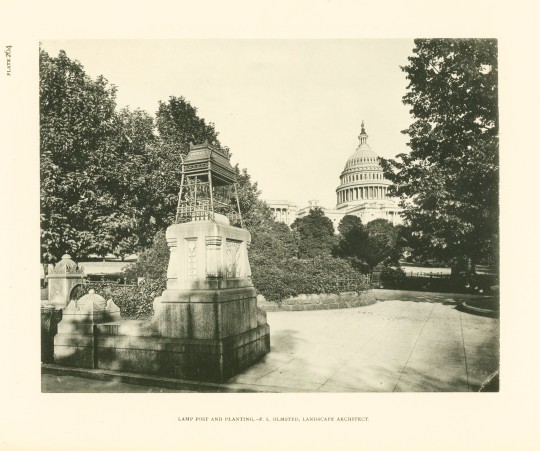
Milestone Monday
On this day, September 18, in 1793, George Washington laid the cornerstone of the United States Capitol Building. He was aided by eight Freemasons dressed in full masonic regalia marking the beginning of a period of construction that lasted seven years and the dawning of the growth of the nation. In 1792, Thomas Jefferson put out a call for architectural design submissions for the Capitol Building and was won over by a late entry from amateur architect William Thornton. Thornton’s design was officially approved in April of 1793, with the caveat that French architect Stephen Hallet would review and modify his plans as needed.
Architect Glenn Brown (1854-1932) explored the history and design of the Capitol Building in his book History of the United States Capitol, published in two volumes by the Government Publishing Office from 1900-1903. For a decade, Brown worked with numerous institutions and organizations to gather plans, illustrations, and the history of the building through architecture and interior design. He highlights that the importance of the building’s merit is not just in its construction and completeness, but its aspirations. Historian Charles Moore, secretary to Michigan Senator James McMillan, writes in the introduction, “[T]he Capitol is not a creation, but a growth, and its highest value lies in the fact that it never was, and it never will be, finished.”
View other Milestone Monday posts.
– Jenna, Special Collections Graduate Intern
#milestone monday#united states capitol building#capitol building#william thornton#Stephen Hallet#glenn brown#history of the united states capitol#Charles Moore#architecture#architectural history
23 notes
·
View notes
Text
irl bsd authors
i haven't found a list of irl bsd authors listed from oldest to most recent so i decided to do that. multiple lists for date of birth, death, and publication of the work their ability is based on (if applicable) + fun stuff at the end
birth dates (oldest to most recent)
alexander pushkin - 6 Jun 1799
nathaniel hawthorne - 4 Jul 1804
edgar allan poe - 19 Jan 1809
nikolai gogol - 1 Apr 1809
ivan gonchorav - 18 Jun 1812
herman melville - 1 Aug 1819
fyodor dostoevsky - 11 Nov 1821
jules verne - 8 Feb 1828
saigiku jōno - 24 Sep 1832
louisa may alcott - 29 Nov 1832
yukichi fukuzawa - 10 Jan 1835
mark twain - 30 Nov 1835
ōchi fukuchi - 13 May 1841
paul verlaine - 30 Mar 1844
bram stoker - 8 Nov 1847
tetchō suehiro - 15 Mar 1849
arthur rimbaud - 20 Oct 1854
ryūrō hirotsu - 15 Jul 1861
ōgai mori - 17 Feb 1862
h. g. wells - 21 Sep 1866
natsume sōseki - 9 Feb 1867
kōyō ozaki - 10 Jan 1868
andré gide - 22 Nov 1869
doppo kunikida - 30 Aug 1871
katai tayama - 22 Jan 1872
ichiyō higuchi - 2 May 1872
kyōka izumi - 4 Nov 1873
lucy maud montgomery - 30 Nov 1874
akiko yosano - 7 Dec 1878
santōka taneda - 3 Dec 1882
teruko ōkura - 12 Apr 1886
jun'ichirō tanizaki - 24 Jul 1886
yumeno kyūsaku - 4 Jan 1889
h. p. lovecraft - 20 Aug 1890
agatha christie - 15 Sep 1890
ryūnosuke akutagawa - 1 Mar 1892
ranpo edogawa - 21 Oct 1894
kenji miyazawa - 27 Aug 1896
f. scott fitzgerald - 24 Sep 1896
margaret mitchell - 8 Nov 1900
motojirō kajii - 17 Feb 1901
mushitarō oguri - 14 Mar 1901
john steinbeck - 27 Feb 1902
aya kōda - 1 Sep 1904
ango sakaguchi - 20 Oct 1906
chūya nakahara - 29 Apr 1907
atsushi nakajima - 5 May 1909
osamu dazai - 19 Jun 1909
sakunosuke oda - 26 Oct 1913
michizō tachihara - 30 Jul 1914
tatsuhiko shibusawa - 8 May 1928
(ace) alan bennett - 9 May 1934
yukito ayatsuji - 23 Dec 1960
mizuki tsujimura - 29 Feb 1980
death dates (oldest to most recent)
alexander pushkin - 10 Feb 1837
edgar allan poe - 7 Oct 1849
nikolai gogol - 4 Mar 1852
nathaniel hawthorne - 19 May 1864
fyodor dostoevsky - 9 Feb 1881
louisa may alcott - 6 Mar 1888
ivan goncharov - 27 Sep 1891
herman melville - 28 Sep 1891
arthur rimbaud - 10 Nov 1891
paul verlaine - 8 Jan 1896
tetchō suehiro - 5 Feb 1896
ichiyō higuchi - 23 Nov 1896
yukichi fukuzawa - 3 Feb 1901
saigiku jōno - 24 Jan 1904
jules verne - 24 Mar 1905
kōyō ozaki - 30 Oct 1903
ōchi fukuchi - 4 Jan 1906
doppo kunikida - 23 Jun 1908
mark twain - 21 Apr 1910
bram stoker - 20 Apr 1912
natsume sōseki - 9 Dec 1916
ōgai mori - 8 Jul 1922
ryūrō hirotsu - 25 Oct 1928
ryūnosuke akutagawa - 24 Jul 1927
katai tayama - 13 May 1930
motojirō kajii - 24 Mar 1932
kenji miyazawa - 21 Sep 1933
yumeno kyūsaku - 11 Mar 1936
h. p. lovecraft - 15 Mar 1937
chūya nakahara - 22 Oct 1937
michizō tachihara - 29 Mar 1939
kyōka izumi - 7 Sep 1939
santōka taneda - 11 Oct 1940
f. scott fitzgerald - 21 Dec 1940
lucy maud montgomery - 24 Apr 1942
mushitarō oguri - 10 Feb 1946
h. g. wells - 13 Aug 1946
akiko yosano - 29 May 1942
atsushi nakajima - 4 Dec 1942
sakunosuke oda - 10 Jan 1947
osamu dazai - 13 Jun 1948
margaret mitchell - 16 Aug 1949
andré gide - 19 Feb 1951
ango sakaguchi - 17 Feb 1955
teruko ōkura - 18 Jul 1960
ranpo edogawa - 28 Jul 1965
jun'ichirō tanizaki - 30 Jul 1965
john steinbeck - 20 Dec 1968
agatha christie - 12 Jan 1976
tatsuhiko shibusawa - 5 Aug 1987
aya kōda - 31 Oct 1990
(ace) allan bennett - still alive
yukito ayatsuji - still alive
mizuki tsujimura - still alive
work (oldest to most recent)
alexander pushkin - A Feast in Time of Plague, 1830
edgar allan poe - The Murders in Rue Morgue, 1841
nikolai gogol - The Overcoat, 1842
edgar allan poe - The Black Cat, 19 Aug 1843
nathaniel hawthorne - The Scarlet Letter, 1850
herman melville - Moby-Dick, 1851
louisa may alcott - Little Women, 1858
fyodor dostoevsky - Crime and Punishment, 1866
ivan goncharov - The Precipice, 1869
yukichi fukuzawa - An Encouragement of Learning, 1872-76
jules verne - The Mysterious Island, 1875
mark twain - The Adventures of Tom Sawyer, 1876
mark twain - Adventures of Huckleberry Finn, 1884
tetchō suehiro - Plum Blossoms in the Snow, 1886
arthur rimbaud - Illuminations, 1886
saigiku jōno - Priceless Tears, 1889
ōchi fukuchi - The Mirror Lion, A Spring Diversion, Mar 1893
ryūrō hirotsu - Falling Camellia, 1894
h. g. wells - The Time Machine, 1895
kōyō ozaki - The Golden Demon, 1897
bram stoker - Dracula, 1897 (his ability has not been named, but c’mon, vampires)
akiko yosano - Thou Shall Not Die, 1903
natsume sōseki - I Am a Cat, 1905-06
katai tayama - Futon, 1907
lucy maud montgomery - Anne of Green Gables, 1908
ōgai mori - Vita Sexualis, 1909
andré gide - Strait is the Gate, 1909
kyōka izumi - Demon Pond, 1913
ryūnosuke akutagawa - Rashomon, 1915
motojirō kajii - Lemon, 1924
f. scott fitzgerald - The Great Gatsby, 1925
kenji miyazawa - Be not Defeated by the Rain, 3 Nov 1931
santōka taneda - Self-Derision, 8 Jan 1932
mushitarō oguri - Perfect Crime, 1933
chūya nakahara - This Tainted Sorrow, 1934
yumeno kyūsaku - Dogra Magra, 1935
margaret mitchell - Gone With the Wind, 1936
john steinbeck - The Grapes of Wrath, 1939
agatha christie - And Then There Were None, 6 Nov 1939
atsushi nakajima - The Moon Over the Mountain, Feb 1942
jun'ichirō tanizaki - The Makioka Sisters, 1943-48
ango sakaguchi - Discourse on Decadence, 1946
teruko ōkura - Gasp of the Soul, 1947
osamu dazai - No Longer Human, 1948
(ace) alan bennett - The Madness of King George III, 1995
yukito ayatsuji - Another, 2005
mizuki tsujimura - Yesterday’s Shadow Tag, 2015
can’t find dates:
michizō tachihara - Midwinter Memento
sakunosuke oda - Flawless
n/a: doppo kunikida, ranpo edogawa, ichiyō higuchi, h. p. lovecraft “Great Old Ones” (fictional ancient dieties eg. cthulhu), aya koda, paul verlaine, tatsuhiko shibusawa “Draconia” (umbrella term for shibusawa’s works/style)
bonus:
elise - The Dancing Girl (1890) by ōgai mori
shōsaku katsura - An Uncommon Common Man by doppo kunikida
Nobuko Sasaki (20 Jul 1878 - 22 Sep 1949) - doppo kunikida’s first wife
gin akutagawa - O-gin (1922) by ryūnosuke akutagawa
naomi tanizaki + kirako haruno - Naomi (1925) by jun'ichirō tanizaki
t. j. eckelburg + tom buchanan - The Great Gatsby (1925) by f. scott fitzgerald
the black lizard - Back Lizard (1895) by ryūrō hirotsu (+ The Black Lizard (1934) by ranpo edogawa)
some fun facts:
the oldest: aya koda 86, andré gide 81, h. g. wells 79, jun'ichirō tanizaki 79, ivan goncharov 79 (alan bennett is 89 but still alive)
the youngest: ichiyō higuchi 24, michizō tachihara 24, chūya nakahara 30
yukito ayatsuji’s Another is also an anime, released in 2012
both edgar allan poe and mark twain’s ability consist of two of the author’s work
17 notes
·
View notes
Text
"Сорока"
Карл Швенингер-младший (Германия, 1854 - 1903)

1 note
·
View note
Text

A Doe with Fawn (Carl Schweninger, Jr, 1854 - 1903)
13 notes
·
View notes
Text
Esoterica

I° esposizione internazionale d'arte decorativa, Torino, 1902 (Collezione Soleri, Torino) | Leonardo Bistolfi (1859-1933, Italia) |

La Superbia (Mira qui come va senza ritegno la cecitade humana al cieco regno), 1679 (British Museum) | Giovanni Maria Mitelli (1634-1718, Italia)

Pornocratès - La dame au cochon, 1896 (Musée Félicien Rops, Namur, Belgium) | Félicien Rops (1833-1898, Belgium) et Albert Bertrand (1852-1912, France)

Los Proverbios, 1817-23 | Francisco Goya (1746-1828, España)

Surreal nude with candle - occult photo, 1950's |cph., Zoltán Glass (1903-1982, Hungary)

Jacobs Dream, 1805 | William Blake (1757-1827, England)

Carnevale | Italico Brass (1870-1943, Italia)

The joyous festival, 1906 ca. | Gaston La Touche (1854-1913, France)

Clouds, Lauterbrunnen Valley, 1901 | Charles Giron (1850-1914, Switzerland)

I cavalieri della nebbia (the knights of the fog), 1896 | Albert Welti

Fairies dances in the woods with faun on gramophone, 1925

Idolo nero (idole noire), 1903 | Frantisek Kupka (1871-1957, Czechia)

The path of silence, 1903 | Frantisek Kupka (1871-1957, Czechia)

Nymphs dancing to Pan's flute | Joseph Tomanek (1889-1974, Czechia - USA)

Oberon, Titania and Puck with fairies dancing, 1786 | William Blake (1757-1827, England)

s/t (w/t), 1975 (Sanok Museum, Poland) | Zdzisław Beksinki (1929-2005, Poland)

AA72, 1972 | Zdzisław Beksinki (1929-2005, Poland)

Dance on the beach, 1900-02 | Edvard Munch (1863.1944, Swedev)

Summer, 1890's | Thomas Wilmer Dewing (1851-1938, USA)

Summer evening, 1947 | Edward Hopper (1882-1967, USA)
7 notes
·
View notes
Text
Birthdays 6.18
Beer Birthdays
William Lassell (1799)
Thomas M. Dukehart (1835)
Sigmund O. Mitler (1850)
Brad Klipner (1976)
Five Favorite Birthdays
Paul Eddington; English actor (1927)
James Montgomery Flagg; illustrator, artist (1877)
James Mallory; English mountaineer, explorer (1886)
Paul McCartney; rock bassist, songwriter (1942)
Chris Van Allsburg; writer, illustrator (1949)
Famous Birthdays
Brian Bebben; actor (1956)
Richard Boone; actor (1917)
Barbara Broccoli; film producer (1960)
Lou Brock; St. Louis Cardinals LF (1939)
Sammy Cahn; songwriter, lyricist (1913)
Roger Ebert; film critic (1942)
Henry Clay Folger; philanthropist (1857)
Gail Godwin; writer (1937)
Carol Kane; actor (1952)
Kay Kyser; bandleader (1897)
Edouard Le Roy; French philosopher, mathematician (1870)
Jeanette MacDonald; actor, singer (1903)
E.G. Marshall; actor (1914)
Ray McKinley; jazz drummer (1910)
Robert Mondavi; winemaker (1913)
Alison Moyet; pop singer (1961)
Sylvia Field Porter; economist, journalist (1913)
Isabella Rossellini; actor (1952)
Frithjof Schuon; Swiss metaphysician, poet, artist (1907)
E.W. Scripps; journalist, publisher (1854)
Blake Shelton; country singer (1976)
Joseph-Marie Vien; French artist (1716)
Alexander Wetmore; ornithologist (1886)
2 notes
·
View notes
Quote
A nonce word tantrum meant penis. In Slang and its Analogues Past and Present (1904), John Stephen Farmer (1854-1916) and William Ernest Henley (1849-1903) mention its occurrence in Burlesque upon Burlesque: or, The Scoffer Scoft. Being some of Lucians Dialogues, newly put into English fustian for the Consolation of those who had rather Laugh and be Merry, then be Merry and Wise (London, 1675), a translation by the English author Charles Cotton (1630-87) of dialogues written in Greek by the satirist Lucian of Samosata (circa 125-180); here, Bacchus tells Apollo that Priapus has sodomised him (nock means bum):
the disputed origin of ‘tantrum’ – word histories
3 notes
·
View notes
Text
hey gang today on looking up random shit for flondon reasons: from 1854 to 1903 it took 1.5 hours to cross the british channel via steam boat ferry
#nobody look at the time I'm totally not going on random research rabbit holes bcus I can't sleep. totally#next on the list: train connections#trying to plot how long travel takes is hard when your brain has no sense of time or distance#oc: vincent bell#chatter
3 notes
·
View notes
Text


OTD in Music History: Composer-pianist Moritz Moszkowski (1854 – 1925) dies in Paris. As a young man, Moszkowski studied piano in Dresden and Berlin, where he also gave his first public concert in 1873. His two books of “Spanische Tänze” (“Spanish Dances,” Opus 12) were published in 1876, and they proved to be an immediate hit; they have remained enduringly popular examples of “nationalist” music written in a lighter vein. Moszkowski proved to be a prolific composer, albeit one who generally focused on “salon” music; he ultimately penned over two hundred small-scale piano pieces which brought him much popularity in his own day. Today, however, Moszkowski is probably best known for his fifteen “Études de Virtuosité” (“Virtuosic Etudes,” Op. 72), as well as a handful of small and brilliant piano pieces which continue to delight audiences across the world as glittering encores in solo piano recitals. One particularly famous example of the latter group of works is “Étincelles” (“Sparks”) -- a particular favorite of legendary 20th Century super-virtuoso Vladimir Horowitz (1903 - 1989). A highly gifted virtuoso pianist himself, Moszkowski’s own concert career was unfortunately cut short after he began suffering from a neurological problem in his arm in the mid-1880s which forced him to re-focus his energies on composing and teaching. Luckily, he proved to have substantial gifts in the latter field, as well -- his diverse array of students included famed British conductor Thomas Beecham (1879 - 1961), who took private lessons in orchestration with him; Josef Hofmann (1876 - 1957), of whom he claimed once that there was nothing anyone could teach him; and Wanda Landowska (1879 - 1959). PICTURED: A c. 1890s cabinet photo showing the middle-aged Moszkowski, which he signed and inscribed to a fan in Paris in 1898 -- also including a short autograph musical quotation from an unknown work.
#Maurycy Moszkowski#Moritz Moszkowski#Moszkowski#composer#classical composer#pianist#piano#teacher#pedagogue#music teacher#music theory#music theorist#Piano Concerto#Concerto#Concert#Johanna d'Arc#Violin Concerto#classical music#Violin#music history#Valse#Don Juan#Faust#Symphony#Overture
7 notes
·
View notes